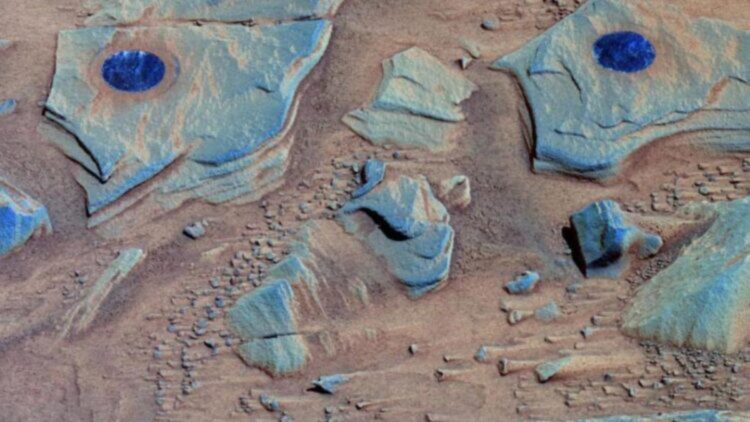The Perseverance rover sent by NASA has again caught the eyes of the scientific world with a new finding on the red planet. While driving along the Jezero Crater floor, studying the old river channel, the rover came across a blueish outcrop.
The discovery has been nicknamed “Atoko Point.” It seems to have been formed from a complex mixture of minerals that has confounded scientists. This discovery is entirely unexpected in revealing Mars’s geological past and provides a glimpse of an unexplained past of the planet.
A dazzling mystery: Unveiling the blue-toned rock Atoko Point
While navigating the rugged terrain of Mount Washburn, NASA’s Perseverance rover encountered something extraordinary: a grayish-blue-colored rock with a speckled surface that stood out in the environment. This peculiar rock is also locally known as “Atoko Point,” it stands 14 inches in height and 18 inches in width.
When Perseverance first touched down, scientists used the SuperCam and Mastcam-Z instruments to characterize the rock, which contains pyroxene and feldspar, minerals not commonly seen in Martian rock formations. Scientists have expressed a lot of interest when Atoko Point has been discovered.
Some theorize that the rock came from a subsurface magma chamber exposed by prehistoric processes. Some people think it could have drifted from another place by ocean streams, a likely theory because Jezero Crater once had a rich water channel. At any rate, Atoko Point remains a geology mystery; it raises more questions than answers.
This discovery was made during a more extensive investigation into the various types of rocks in Jezero Crater. The scientists discovered Mount Washburn was a geologic treasure trove, yielding a suite of samples that could be like a ‘grab bag’ to reveal the early Martian geologic and climatic history.
Unexpected shortcuts lead to scientific breakthroughs
Initially, the timing of Perseverance’s trip to Mount Washburn was a tactical maneuver to shorten the distance to be traveled. The pathway through the Neretva Vallis dune field enabled the rover to avoid large rocks hazardous to the wheels while decreasing the distance to the “Bright Angel” area.
However, what was intended to be only a short deviation from the plan quickly became a scientifically interesting and valuable dig, which exposed a range of rock textures and compositions. The first thing that was noticed by the team was the presence of a bluish color on the rocks at Mount Washburn.
These formations were also dissimilar in color, texture, and composition to other rocks analyzed earlier on Mars. Of them, Atoko Point was noticed as one of the most extraordinary geological formations with a tight-toned speckled appearance.
This new way has revealed new possibilities for understanding the geological history of Mars. The type of rocks in this area indicates a complex interplay of volcanic processes, water action, and erosion, which has taken billions of years. Such discoveries bear testimony to the fact that flexibility plays a critical role in space missions.
What Atoko Point tells us about Mars’ ancient secrets
What Atoko Point means is very significant to our knowledge of Mars. It suggests that the rock may have formed from molten material at depth in the Earth’s crust, where minerals such as pyroxene and feldspar crystallized slowly as the melt cooled.
The following reasons can be put forward to support this theory: The rock is composed of crystals of felsite, and the chemical composition of the crystals is such that their arrangement is unlike that of most other types of stones.
However, other scholars have suggested that Atoko Point was moved by water currents on Mars, so these scientists claim a more complex and extensive Martian hydrological system. If so, it is possible that Atoko Point is not an indigenous Martian formation of Jezero Crater but rather a piece of a Martian formation from another location.
Whether these features were formed through the processes described above or some other mechanism, Atoko Point contributes another slice to the Mars geologic story. With the help of the mineral content and the structure of the rocks, the researchers will be able to reconstruct what exactly has happened to form the Red Planet’s crust and whether it was once capable of supporting life.
Atoko Point and the bluish rocks at Mount Washburn show that Mars has so many more secrets to reveal. While scientists continue to debate the origins of these formations, one thing is sure: every new find helps to shed light on the diverse history of the Red Planet. While Perseverance continues to work on its mission on Mars, an Atoko point symbolizes what can still be discovered in the solar system.

